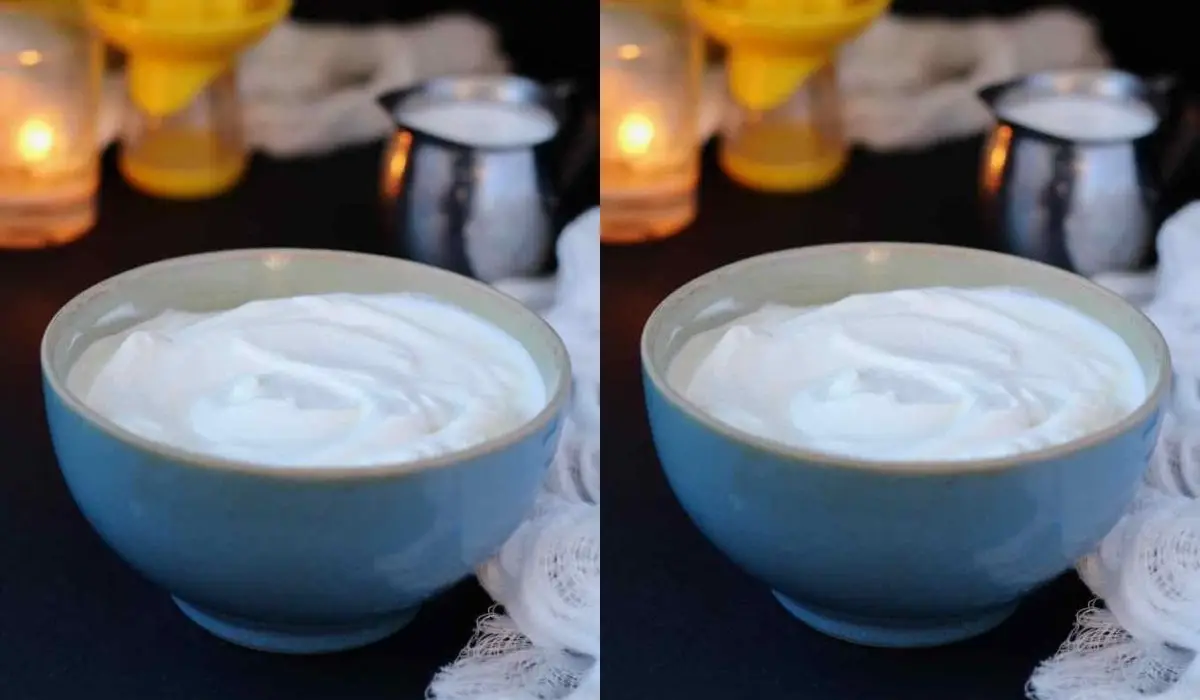Smetana is a common dairy product in Central and Eastern European cuisines. It is more often used in Russia, Poland, and Romania. Smetana has a similar appearance to creme fraiche, but tastes more like sour cream. It’s known as “Russian sour cream”. Smetana is simple to make at home if you plan ahead of time.
What is Smetana?
Smetana (Russian: сметана) is a dairy product comparable to crème fraiche. It is common throughout Central and Eastern Europe. It looks similar to crème fraîche. However, crème fraîche typically has 28% fat. Russian sour cream, on the other hand, is substantially more fatty, containing between 36% and 42% fat. However, smetana can have fat content ranging from 10% (liquid) to 70% (thick).
To choose between smetana variants, Poles and Russians compare their fat contents. It is dubbed “Russian sour cream”. However, its flavor is far less sour than sour cream offered in supermarkets.
Smetana is created by decanting milk and storing the cream to separate the fat from it. It is traditionally prepared with cow’s milk. In Romania, however, buffalo milk is preferred over cow milk.
How to create Smetana.
Homemade smetana can be manufactured in 24 hours. Larger volumes of milk require several days of processing.
The milk container is kept cool and dry for several days. The fat content in milk increases. Then you can remove the milk fat. Of fact, this settling period can be significantly decreased, particularly in industrial procedures that use centrifuges known as skimmers.
What’s the difference between smetana, creme fraiche, and sour cream?
Smetana’s cooking qualities differ from those of sour cream and crème fraîche. Indeed, it does not form lumps or curdle, and hence does not separate when cooking. Because of this feature, it can be easily mixed into hot foods.
For this reason, it is the preferred component in baking recipes or meat stews like beef stroganoff. Smetana, unlike retail sour cream, does not curdle when exposed to heat. It is commonly used in traditional cuisine and baking.
In the United States, sour cream is acidic and can include up to 16% fat. Certain sour creams can contain as much as 20% fat.
Crème fraîche has a fat level of approximately 30% and no thickeners. It is thicker than sour cream, has a deeper flavor, and is not as acidic.
Which cream to use?
The decision between the three is dependent on how you want to use it. Sour cream, while lower in fat than crème fraîche or smetana, is higher in protein. When you simmer or boil sour cream, it curdles. In this situation, creme fraiche or smetana are preferable than sour cream when making hot sauces or soups.
Controversies
Nowadays, it can be difficult to find decent quality smetana. Indeed, in order to cut production costs, certain suppliers are willing to employ food additives to stabilize and thicken smetana.
The items acquired are then deemed poor and unfit for culinary use. In rare situations, the addition of these food additives might ruin specific recipes by containing gelatin, rennet, or even plant enzymes. When in doubt, farm smetana is the safest to use because it contains more fat and is thicker.
Use of Smetana and recipes
Smetana is used either alone or as an addition in soups. In Ukrainian, Belarusian, and Russian cuisines, Russian sour cream is frequently used in borscht and other soups.
Smetana can alternatively be served with dumplings or ravioli like pelmeni, pierogi, or varenyky.
Russian sour cream is often used in crepes, including the popular blinis. Other types of pancakes pair well with smetana. This refers to naleśniki, oladyi, or syrniki. It can also be used to garnish savory pancakes.
In baking, smetana provides a distinct flavor to cake and dessert recipes. Additionally, there are two characteristic desserts based on the famous Russian sour cream:
Smetannik is a cake made with Russian sour cream (smetana) and notable for its fondant side.
Medovik (Russian: Медoвик), a popular Slavic cake in the republics of the former Soviet Union. It consists of multiple successive layers of sponge cake with honey, with copious amounts of smetana interspersed. Some recipes utilize condensed milk instead of smetana. Buttercream is used in more recent variations.


